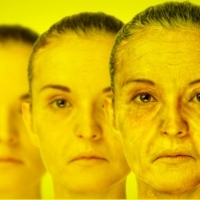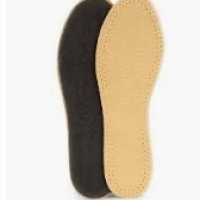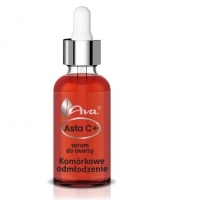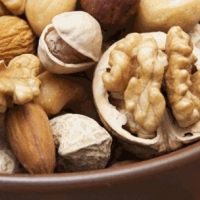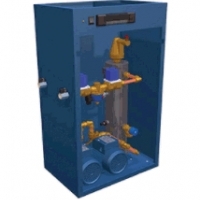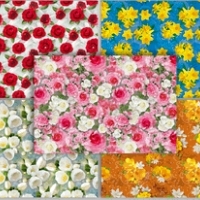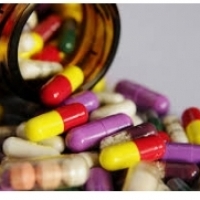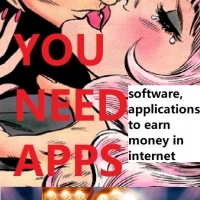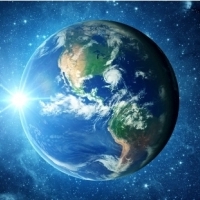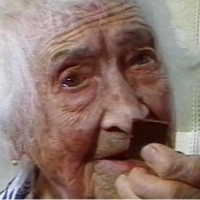0 : Odsłon:
Magiczne grzybki spowalniają starzenie się komórek i ciała
Magiczne grzybki leczą depresję i spowalniają neurodegenerację. A co z długowiecznością?
Owiana aurą tajemniczości, deprecjonowana przez polityków przez dziesięciolecia i odzyskująca dobre imię dzięki staraniom naukowców oraz terapeutów. Substancja zawarta w tzw. magicznych grzybkach może nie tylko wywoływać stany rozszerzonej świadomości, ale także leczyć i regenerować ciało oraz spowalniać procesy starzenia. Aby jednak móc w ogóle badać tę substancję, naukowcy potrzebują zgody. Coraz częściej jednak udaje im się ją zdobyć. W niektórych krajach jest już zdekryminalizowana, a także dozwolona w użyciu terapeutycznym.
Naukowcy z wydziałów medycznych na Uniwersytecie Emory w Atlancie oraz Baylor College of Medicine w Houston dokonali kolejnego odkrycia świadczącego o wysokim potencjale terapeutycznym grzybowego specyfiku. Nie chodzi jedynie o leczenie zaburzeń psychicznych czy wspieranie neurogenezy, lecz o funkcję przeciwstarzeniową. Efekt odmładzający zbadano w kontekście zarówno komórek, jak i całego organizmu.
"Psylocybina, naturalnie występujący składnik psychodeliczny produkowany przez grzyby halucynogenne, zwróciła na siebie uwagę za sprawą znaczących dowodów na jego potencjał terapeutyczny w leczeniu szeregu schorzeń psychiatrycznych i neurodegeneracyjnych. Choć działające u podstaw mechanizmy molekularne pozostają enigmatyczne, kilka badań eksplorowało jej wpływ systemowy. My dostarczyliśmy pierwszy dowód eksperymentalny na to, że leczenie psylocyną (aktywnym metabolitem psylocybiny) promuje zwiększoną długowieczność u starych myszy, co sugeruje, że psylocybina może być silnym środkiem geroprotekcyjnym" - piszą autorzy.
Badacze przypominają, że dotąd opublikowano ponad 150 studiów klinicznych, w których badano użycie tej substancji w psychiatrii (leczenie depresji, zaburzeń lękowych i uzależnień), chorób neurodegeneracyjnych (choroba Alzheimera), leczeniu bólu i nie tylko. Wspominają także, że już jedna dawka tego środka niweluje objawy psychiczne i fizjologiczne na długi czas - nawet do 5 lat. W nowym badaniu naukowcy skupili się jednak na innych aspektach.
Psylocyna spowalnia starzenie się komórek człowieka nawet o 57%
Badacze postanowili sprawdzić, jak psylocyna wpływa na starzenie się komórek. Wykorzystali do tego model replikujący starzenie się komórek oparty na fibroplastach. Badania przeprowadzono in vitro, czyli poza organizmem. Po podaniu środka w ilości 10 μM okazało się, że długość życia komórek wydłużyła się o 29%. Przy wyższej dawce 100 μM długość życia fibroplastów wydłużyła się aż o 57%. Terapia poskutkowała również podwyższeniem poziomu sirtuiny 1 (enzymu SIRT1, pełniącego kluczową rolę w regulacji starzenia się, metabolizmu i odpowiedzi na stres komórek), a także obniżeniem poziomów stresu oksydacyjnego.
Skuteczność tej terapii jest zależna zarówno od dawki substancji, jak i pochodzenia komórek. Fibroblasty płodowe są bardziej podatne na dobroczynne działanie niż te od dorosłych. Widać jednoznacznie, że testy in vitro wypadły pomyślnie i starzenie się komórek zostało mocno spowolnione. A co mówią testy in vivo?
Ta substancja wydłuża życie myszy. Czy działa też na ludzi?
Działanie substancji czynnej zawartej w grzybach sprawdzono także na żywych organizmach. Naukowcy zbadali, jak wpływa on na długowieczność myszy. Do testów wybrano starsze samice w wieku 19 miesięcy, co odpowiada ludzkiemu wiekowi 60-65 lat. Najpierw podano im mniejszą dawkę (5 mg/kg masy ciała), a następnie co miesiąc podawano dużą dawkę (15 mg/kg). W sumie myszy przyjęły 10 dawek.
Co ciekawe, badacze zaobserwowali, że po 30 minutach od podania myszy zaczęły szybko poruszać głowami z boku na bok (tzw. head-twitch reponse, HTR), co u gryzoni laboratoryjnych jest powiązane z aktywacją receptora serotoninowego 5-HT2A i występuje także po podaniu innych psychodelików. Oznacza to, że substancje z tej grupy oddziałują psychoaktywnie również na myszy i szczury. Badanie jednak skupiło się na czymś innym.
"Myszy, którym podano psylocybinę, zademonstrowały znacząco wyższą przeżywalność (80%) w porównaniu do grupy kontrolnej (50%). Choć nie zmierzono tego ilościowo, myszy leczone psylocybiną wykazały poprawę fenotypową w ogólnej jakości futra, w tym jego porostu i redukcji siwych włosów w porównaniu do myszy z grupy kontrolnej. Podsumowując, dostarczyliśmy pierwszego dowodu eksperymentalnego, demonstrującego, że leczenie psylocybiną może zwiększyć przeżywalność u podstarzałych myszy" - piszą autorzy badania.
Zdaniem autorów ich odkrycie potwierdza hipotezę korzystnego wpływu badanej substancji na telomery, czyli fragmenty znajdujące się na końcach chromosomów, które chronią je przed uszkodzeniem w trakcie podziału komórki. Ich skrócenie jest związane właśnie ze starzeniem się. Póki co nie wiadomo, czy taki sam efekt anti-aging może też zachodzić u ludzi. Testy in vitro na ludzkich komórkach oraz in vivo na żywych myszach zdają się obiecujące. Polskie prawo zabrania jednak posiadania tego środka przez osoby nieuprawnione, więc odradzamy testy na własną rękę.
Odkryto białko spowalniające proces starzenia u myszy. Teraz czas na ludzi
Źródło: Kato, K., Kleinhenz, J.M., Shin, YJ. et al. Psilocybin treatment extends cellular lifespan and improves survival of aged mice. npj Aging 11, 55 (2025). https://doi.org/10.1038/s41514-025-00244-x
cytat z linku:
Abstract
Psilocybin, the naturally occurring psychedelic compound produced by hallucinogenic mushrooms, has received attention due to considerable clinical evidence for its therapeutic potential to treat various psychiatric and neurodegenerative indications. However, the underlying molecular mechanisms remain enigmatic, and few studies have explored its systemic impacts. We provide the first experimental evidence that psilocin (the active metabolite of psilocybin) treatment extends cellular lifespan and psilocybin treatment promotes increased longevity in aged mice, suggesting that psilocybin may be a potent geroprotective agent.
Introduction
To date, >150 clinical studies with psilocybin have been completed or are ongoing for various clinical indications, including psychiatric (anxiety, depression, addiction), neurodegenerative (Alzheimer’s), pain, and more1,2,3. Human studies have demonstrated that a single-dose of psilocybin can improve debilitating physical and psychological symptoms—with durable effects (up to ~5 years)4,5. Despite considerable clinical evidence supporting the therapeutic benefits of psilocybin, the molecular mechanisms responsible for these impacts remain enigmatic. Studies with psilocybin have predominantly focused on neurological impacts and/or behavioral outcomes; few studies have evaluated alternative or systemic mechanisms which may also contribute to its beneficial effects. The “psilocybin-telomere hypothesis”6 postulates that psilocybin interventions may quantifiably impact telomere length, which offers a potential explanation for its efficacy across a wide range of clinical indications. This hypothesis is based on a large corpus of studies linking mental health biological aging markers6. Accumulating evidence indicate that clinical depression accelerates aging and telomere shortening7,8,9. Positive mental psychological states are associated with longer telomeres, whereas negative psychological conditions (e.g. chronic stress, anxiety, and depression) are associated with telomere attrition7,10,11,12,13. Given the clinical evidence supporting the efficacy of psilocybin for these conditions, it is plausible that psilocybin may impact telomere length. However, no prior studies have experimentally investigated the direct impact of psilocybin on biological aging.
To evaluate the impact of psilocybin on cellular aging, we employed a validated model of replicative senescence using human fetal lung fibroblasts14. For all in vitro studies, we used psilocin (the active metabolite of psilocybin), which is formed when psilocybin is broken down after ingestion. Cells were serially passaged with media containing psilocin or vehicle until they reached replicative senescence. Psilocin treatment (10 μM) resulted in a 29% extension of cellular lifespan, characterized by delayed exhaustion of proliferative potential, increased cumulative population doublings, and decreased population doubling time, compared to vehicle (Fig. 1A–F). Results were more striking using a higher dose of psilocin in the same cell type (100 μM treatment led to a 57% extension in cellular lifespan; Supplementary Fig. 1A–F). Induction of senescence occurred in both vehicle and psilocin-treated cells, as both groups reached exhaustion of their proliferative potential (no evidence of oncogenic transformation was observed), however the onset of senescence was delayed in psilocin-treated cells (Fig. 1A). Further, compared to vehicle, psilocin-treated cells exhibited decreased βgal activity (Fig. 1G–H). These results were consistent with dose-dependent reductions in markers of cell cycle arrest (p21, p16), and increased markers of proliferation (PCNA) and DNA replication (pRB) (Fig. 1I). Compared to vehicle, psilocin treatment also led to elevated sirtuin1 (SIRT1; a critical role in regulating cellular aging, metabolism, and stress-responses) and decreased Growth Arrest and DNA Damage-inducible 45 alpha (GADD45a) levels, suggesting reduced DNA damage (Fig. 1I). Psilocin treatment also reduced oxidative stress levels in a dose-dependent manner (Fig. 1J), which was associated with decreased levels of NADPH oxidase-4 (Nox4, a master regulator of oxidant production) and increased nuclear factor erythroid 2-related factor 2 (Nrf2, a master regulator of antioxidant responses) (Fig. 1I). Overall, these results suggest that the in vitro impacts of psilocin are dose-dependent, with higher dosing ultimately leading to greater cellular life extension. To further validate these findings, we repeated these studies with a different cell type (adult human skin fibroblasts); 100 μM psilocin treatment increased cellular lifespan by 51%, which was accompanied by reduced senescence and decreased oxidative stress levels (Supplementary Fig. 2). To investigate other potential mechanisms by which psilocin contributes to increased lifespan, we also evaluated the impact on telomere length (reductions in telomere length is a hallmark of cellular aging). As expected, senescent vehicle-treated cells exhibited reduced telomere length compared to young control cells (Fig. 1K). In contrast, telomere length was preserved in psilocin-treated age-matched cells (Fig. 1K). In summary, these data suggest that psilocin impacts signaling pathways associated with cellular aging, which ultimately delayed the onset of senescence and increased cellular lifespan.
Fig. 1: Psilocin treatment extends cellular lifespan.
figure 1
Human lung fibroblasts were treated continuously with vehicle (DMSO 0.02%) or 10 µM psilocin until they reached replicative senescence. A Cumulative population doubling curves; arrows indicate time point when cells reach replicative senescence (n = 4 technical replicates). B The area under the curve (AUC) was calculated using the sum of trapeze areas for each time point intervals (n = 4 technical replicates). C Cumulative population doublings at the onset of senescence (n = 4 technical replicates). D Population doubling time comparing young cells (0–4 days) vs. aged cells (60–63 days) post-treatment. Groups were compared using 2-way ANOVA (n = 4 technical replicates). E Cumulative cell number over cellular lifespan. F Table showcasing cellular lifespan population doublings and lifespan extension. Extension refers to the number of additional population doublings of psilocin-treated cells vs. vehicle, which is also shown as a percent increase relative to vehicle-treated cells. G, H Senescence was assessed at 42 days post-treatment by senescence-associated β-galactosidase (β-gal) staining; scale bar = 70 µm (G) and quantitative assessment of β-gal activity (n = 5 technical replicates) (H). I Western blot demonstrating dose-dependent alterations in protein expression of age-associated markers. J Reactive oxygen species (ROS) production was evaluated by Amplex Red assay (n = 3 technical replicates). K Average telomere length was assessed by RT-PCR (n = 4 technical replicates) and is expressed as kilobase pairs per chromosomal end. All values are shown as mean ± SD. Unless otherwise stated, comparisons were made using two-sided unpaired t-tests with unequal variance.; *p little as 0.05, **p little as 0.01, ***p little as 0.001, ****p little as 0.0001, ns not significant.
Full size image
To evaluate the impact of psilocybin on longevity in vivo, aged (19 month) female mice were treated with vehicle or psilocybin once/month for 10 months (Fig. 2A); mice were initially given a low-dose (5 mg/kg) for the first treatment followed monthly high-dose (15 mg/kg) treatment for a total of 10 treatments. We elected to utilize 19-month old mice, which is roughly equivalent to 60–65 human years, in order to evaluate its therapeutic potential as a clinically-relevant anti-aging intervention. Within 30 min post-treatment, mice exhibited increased head-twitch response (data not shown), which is a well-established behavioral indicator of hallucinogenic impacts of psilocybin in mice15. Both psilocybin and vehicle groups exhibited some loss in body weight from the start to end of the treatment protocol, however weight loss was not significantly different in vehicle- vs. psilocybin-treated mice (Supplementary Fig. 3). Notably, psilocybin treated mice demonstrated significantly higher survival (80%), compared to vehicle (50%) (Fig. 2B). Although not quantitatively measured, psilocybin-treated mice exhibited phenotypic improvements in overall fur quality, including hair growth and reductions in white hair compared to vehicle-treated mice (Fig. 2C). In summary, we provide the first experimental evidence demonstrating that psilocybin treatment can enhance survival in aged mice.
Fig. 2: Psilocybin treatment in aged mice extends lifespan.
figure 2
C57BL/6J aged (19 month) female mice were treated with vehicle (n = 28) or psilocybin (n = 30) by oral gavage. Mice were given a lower dose (5 mg/kg) of psilocybin in month 1, followed by monthly dosing with high dose (15 mg/kg). At 10 months post-initial treatment, when the first group of mice reached median survival, all were euthanized. A Schematic diagram of treatment protocol. B Kaplan–Meier survival curve over the 10-month treatment duration, showing vehicle-treated (n = 14 out of 28) vs. psilocybin-treated (n = 24 out of 30) mice; *p = 0.014 using the Log-rank Mantel–Cox test. C Representative images of mice prior to treatment (19 month) and after the final treatment (28 month) with vehicle or psilocybin. Red arrows indicate regions where hair growth and/or hair color changes were observed.
Full size image
Psilocybin is a potent serotonergic agonist that interacts with the serotonin receptor (5-HT2A) and other 5-HT receptor subtypes. Notably, the 5-HT2A receptor is expressed in multiple organs and cell types (including fibroblasts, neurons, cardiomyocytes, endothelial, epithelial, macrophages, and T-cells)16. A recent study demonstrated that 5-HT2A stimulation in cortical neurons induced SIRT1-dependent expression of antioxidant enzymes, which led to reduced oxidative stress and neuroprotection17. SIRT1 is a key regulator of senescence, and overexpression of SIRT1 has been shown to extend organismal lifespan in C. elegans and mice18. Here, we demonstrate that psilocin increased SIRT1 expression in cells, suggesting a potential mechanism by which psilocybin delays senescence and promotes longevity. This study provides the first experimental evidence suggesting that psilocybin may impact multiple hallmarks of aging, including delayed senescence, preservation of telomere length, enhanced DNA stability (via increased DNA-damage responses such as GADD45a), and/or it could reduce aberrant intercellular communication (via decreased oxidative stress and subsequent signaling). Future studies are warranted to further elucidate the impacts of psilocybin on age-related pathways and the molecular mechanisms responsible for its systemic effects (including 5-HT-dependent and/or -independent mechanisms). Prior studies have demonstrated that the long-lasting impacts of psychedelic treatments may be due to epigenomic-driven alterations, including chromatin remodeling and DNA methylation19,20,21. It is possible that psilocybin may also mediate epigenetic changes which contribute to the observed geroprotective effects; such studies warrant investigation. However, regulatory barriers imposed by its schedule I designation along with the limited availability of federal funding for psilocybin research remain significant obstacles that have hindered research progress22,23; thus, the mechanisms underlying its potential therapeutic benefits remain poorly understood.
Our study provides the first experimental evidence demonstrating that psilocybin impacts hallmarks of aging, supporting the previously proposed “psilocybin-telomere hypothesis”6. We demonstrate that psilocin/psilocybin treatment extends both cellular and animal lifespan (even when treatment is initiated late in life). An effective anti-aging treatment that could be administered to adults during late life could have significant clinical potential. The dose utilized in mice was modeled based on a clinical trial in patients ranging from 29 and 70 years (three patients were >65 years), where no serious adverse events were reported at the study endpoint or the post-study follow-up (98 days)24; These findings support the feasibility of psilocybin treatment in older adults. Further, the FDA’s designation of psilocybin as a “breakthrough therapy” underscores its safety profile, as minimal adverse effects have been reported25,26,27,28. However, additional studies are warranted to identify optimized protocols for therapeutic efficacy, including the age of treatment initiation, frequency and dose of treatments, and to determine if treatment impacts maximal lifespan. Would earlier intervention yield greater therapeutic benefits, and/or is there a threshold in older age beyond which psilocybin fails to provide efficacy? Although some studies have reported sex-specific effects of psilocybin in rodents, the existing literature offers limited and inconsistent evidence regarding sex-based pharmacodynamic differences29,30,31. Accordingly, we employed a single-sex design to minimize potential confounding variables associated with sex-based biological differences and to ensure reproducibility in this initial in vivo investigation. Future studies are warranted to evaluate sex-specific therapeutic and mechanistic effects of psilocybin. Our in vitro studies suggest that psilocin-mediated cellular lifespan extension did not result in oncogenic transformation, as psilocin-treated cells did reach replicative senescence and exhaustion of proliferative potential. However, it could be argued that delayed exhaustion of proliferative potential and/or senescence could impact oncogenesis or cancer progression. Future research should rigorously assess the potential impacts of long-term psilocybin treatment in vivo on cancer incidence and/or progression. Few studies have evaluated the impacts of long-term prolonged dosing.
Beyond its neurological and psychological benefits, our findings suggest that psilocybin influences systemic aging processes, potentially explaining its long-lasting therapeutic effects across multiple disease indications. Although the impact of psilocybin on peripheral organs remains largely unexplored, these studies implicate untapped therapeutic potential for psilocybin’s systemic impacts. Psilocybin may represent a “disruptive” pharmacotherapy as a novel geroprotective agent to promote healthy aging and/or as a potential therapeutic intervention for age-related diseases.
Methods
Reagents
Psilocybin (catalog #14041) and psilocin (catalog # 11864) were obtained from Cayman Chemical (Ann Arbor, MI) under a DEA license. We purchased the following antibodies: GAPDH, RB, phosphor-RB, (Cell Signaling); Nox4, PCNA, p53, p21, and β-actin (Abcam); p16 (BD Biosciences); Secondary horseradish peroxidase (HRP)-conjugated anti-mouse and anti-rabbit antibodies (Bio-Rad). We purchased a Halt Protease and Phosphatase inhibitor cocktail (ThermoFisher Scientific). All other chemicals/reagents were purchased (Sigma) unless otherwise stated.
Animal studies
Aged (19-month-old) female C57BL/6J mice were obtained from The Jackson Laboratory and acclimated in the institutional animal facility for one month prior to study initiation. Mice were then randomly allocated to control and treatment groups to ensure balanced group assignments, including comparable average body weights across groups. The rationale for dosing regimen utilized was based on a number of factors. First, we sought to model high-dose used in a clinical study for chronic pain, where patients were administered a psychedelic dose (25 mg) of psilocybin24. Using the standard allometric scaling method32, a human dose of 25 mg of psilocybin translates to a mouse dose of 5.14 mg/kg; this informed our starting point for dosing. However, mice exhibit a significantly faster metabolic profile for psilocybin compared to humans, leading to a shorter half-life and more rapid systemic clearance of psilocin; the elimination half-life of psilocin is ~0.9 h in mice33 vs 1.8–3 h in humans34. Due to this rapid clearance in mice, a higher dose of 15 mg/kg was selected to ensure sufficient systemic exposure comparable to those observed in human clinical trials. It is also important to note that toxicology studies indicate that psilocybin is well tolerated in mice up to doses of 180–250 mg/kg35, which is well above the dose utilized in this study. Mice received a low-dose (5 mg/kg) initially for the first treatment to acclimate mice for long-term treatment, followed by monthly high-dose of psilocybin (15 mg/kg in sterile saline) or vehicle (sterile saline) via oral gavage (on conscious mice) once/month (10 treatments total) (Fig. 2A); all treatments were administered monthly between ~9:00am and 12pm. Mice received treatments from a stock concentration of drug (4 mg/ml in sterile saline); mice were weighed on each treatment day and received a gavage volume ranging from 100 to 200 μl (total volume), depending on their weight at the time of treatment. All mice were sacrificed once any group reached 50% mortality, signaling the end of the study per IACUC protocol. Mice were euthanized by CO2 inhalation followed by a secondary method to ensure death, in accordance with the American veterinary medical association (AVMA) guidelines for the euthanasia of animals and approved institutional IACUC protocols. Mice were monitored for body weight and signs of morbidity throughout the duration of the experiment. Mice were provided standard chow ad libitum and maintained under a 12:12-h light/dark cycle. Researchers were not blinded to group allocation during the experimental procedures or data analysis due to logistical constraints, including regulatory and safety protocols associated with handling psilocybin, a Schedule I controlled substance, as well as the exploratory nature of the study. All experiments and procedures involving animals were conducted in accordance with Institutional Animal Care and Use (IACUC) Committee guidelines at Emory University (PROTO202000138).
Telomere length assay
Genomic DNA was isolated from cells using the QIAwave DNA Blood & Tissue kit (QIAGEN). Quantitative RT-PCR was performed with genomic DNA using primers designed against human telomere sequence or a single copy reference gene (Human kit, ScienCell, Catalog #8918). The single copy reference (SCR) primer set recognizes and amplifies a 100 bp-long region on human chromosome 17, which serves as reference for data normalization; Amplification curves were compared to the reference control with a known telomere length.
Cell culture
Human fetal lung fibroblasts (IMR-90) were purchased (Coriell Cell Repositories) and adult skin fibroblasts were purchased (ATCC). IMR-90 cells were cultured in DMEM supplemented with 10% fetal bovine serum (FBS), 100 U/ml penicillin, 100 μg/ml streptomycin. Skin fibroblasts were cultured in fibroblast basal media supplemented with 2% FBS, L-glutamine (7.5 mM), FGF (5 ng/ml), insulin (5 μg/ml), hydrocortisone (1 μg/ml), and ascorbic acid (50 μg/ml). All cells were purchased at passages 7–8 and expanded for 2–3 passages prior to initiating treatment protocols. Psilocin was dissolved in DMSO (50 mM stock) for in vitro studies.
Population doubling
Cells were plated at a fixed density (1 × 106) and cultured in a T75 flask. Cells were counted using a TC20 cell counter (Bio-rad) and passaged every 3–4 days and re-plated (1 × 106) throughout the duration of the experiment (until cells reached replicative senescence). The number of population doublings (PD) was calculated. We quantified the differences of psilocin vs. vehicle treatment using the Area Under the Growth Curve (AUC), as an indicator of treatment effect on cell doubling36,37.
Senescence assays
We used β-galactosidase substrate for the quantitative assessment of cellular senescence (ThermoFisher Scientific), according to the manufacturer’s instructions. We also used a senescence detection kit designed to histochemically detect β-gal activity in cultured cells (Abcam).
Western immunoblotting
We prepared cell lysates in RIPA buffer with Halt protease and phosphatase inhibitor, subjected them to SDS-PAGE under reducing conditions, and performed western immunoblotting as previously described. Lysates were quantitated using a Micro BCA Protein assay kit (Pierce) according to instructions. We used ECL western blotting substrate (Azure biosystems) and Azure C400 Imaging Systems (Azure biosystems) to detect specific immunoreactive signals.
Reactive oxygen species (ROS) detection
Hydrogen peroxide (H2O2) levels in cells was evaluated by Amplex Red assay kit (ThermoFisher Scientific). The fluorescence intensity was measured at 550 nm for excitation and emission in the range of 590 nm using the Synergy H1 Plate Reader (BioTek).
Statistical analysis
Graphs were generated and statistical analyses were performed with GraphPad Prism Software Version 10.4.1 (532) Boston, MA, USA. For all cell culture experiments (Fig. 1), population doubling levels were calculated based on direct cell counts performed in four technical replicates at each passage. These replicate values were used to compute the mean ± standard deviation (SD) for each time point. Data from other assays, including β-galactosidase activity, ROS production, and telomere length, were analyzed using 3–5 technical replicates per group, as specified in the figure legends. Statistical comparisons were performed using two-tailed unpaired t-tests with unequal variance, or two-way ANOVA where appropriate. For the animal survival study (Fig. 2), survival curves were analyzed using the log-rank Mantel–Cox test. To ensure uniform survival endpoint analysis, all mice were euthanized at 10 months post-initial treatment, when the first group reached median survival. A p-value less than 0.05 was considered statistically significant. Complete details of statistical tests, number of replicates (n), and significance thresholds are provided in figure legend.
Data availability
All datasets generated and/or analyzed during the current study are publicly available within this manuscript or the supplemental material.
: Wyślij Wiadomość.
Przetłumacz ten tekst na 91 języków
: Podobne ogłoszenia.
ROBOT KUCHENNY KREMOWA 600 W
ROBOT KUCHENNY KREMOWA 600 W:Wielofunkcyjny robot kuchenny z planetarnym ruchem narzędzi, 600 W mocy i szeroką gamą zastosowań. Kompletny zestaw wraz z 4,3 litrową misą ze stali szlachetnej i 3 narzędziami do mieszania i ugniatania ciasta. Uniwersalny…
200: ನಿಮ್ಮ ಆಕೃತಿಗಾಗಿ ಮಹಿಳಾ ಕೋಟ್ ಅನ್ನು ಹೇಗೆ ಆರಿಸುವುದು:
ನಿಮ್ಮ ಆಕೃತಿಗಾಗಿ ಮಹಿಳಾ ಕೋಟ್ ಅನ್ನು ಹೇಗೆ ಆರಿಸುವುದು: ಪ್ರತಿ ಸೊಗಸಾದ ಮಹಿಳೆಯ ವಾರ್ಡ್ರೋಬ್ ಚೆನ್ನಾಗಿ ಹೊಂದಿಕೊಂಡ ಮತ್ತು ಸಂಪೂರ್ಣವಾಗಿ ಆಯ್ಕೆ ಮಾಡಿದ ಕೋಟ್ಗೆ ಸ್ಥಳಾವಕಾಶವನ್ನು ಹೊಂದಿರಬೇಕು. ವಾರ್ಡ್ರೋಬ್ನ ಈ ಭಾಗವು ದೊಡ್ಡ ಮಳಿಗೆಗಳಿಗೆ ಮತ್ತು ದೈನಂದಿನ, ಸಡಿಲವಾದ ಶೈಲಿಗಳಲ್ಲಿ…
Et oportet de mediis soccus momenti pro diabetics.
Et oportet de mediis soccus momenti pro diabetics. Auctoramenta exstantia, quod aliquis comfortable, illa apta calceamenta recte habere signanter ictum in salutem nostram, ut sit bene esse, et consolationem motum infectum est, donec sterilis aqua, quod…
Kaj se bo zgodilo z vašim telesom, če začnete vsak dan jesti med pred spanjem? Trigliceridi: med: triptofan:
Kaj se bo zgodilo z vašim telesom, če začnete vsak dan jesti med pred spanjem? Trigliceridi: med: triptofan: Večina nas se zaveda, da se med lahko uporablja tudi za boj proti prehladu in za vlaženje kože, vendar ima med drugim številne neverjetne…
Ciekawy przypadek pociągu Zanetti - a może podróż w inny wymiar?
Ciekawy przypadek pociągu Zanetti - a może podróż w inny wymiar? Widocznie Philadelphia Experiment (1943) nie jest samotny przypadek podróżowania, który został zgłoszony na przestrzeni lat. Mianowicie latem 1911 roku pociąg Zanetti z 3 wagonami i 106…
5621AVA. Asta C 세포 재생. 얼굴 용 세럼. 목과 얼굴 크림. 민감한 피부를위한 크림.
Asta C 세포 재생. 카탈로그 코드 / 인덱스 : 5621AVA. 카테고리 : Asta C, 화장품 행동 antyoksydacja, 각질 제거, 리프팅, 보습, 회춘, 색상의 개선, 부드럽게 신청 혈청 화장품의 종류 겔 혈청 용량 30 ml / 1 fl.oz. 천연 아스 타잔 틴은 더 강력한 항 산화제입니다 : • 비타민 C보다 6000 배, • 코엔자임 Q10보다 800 배, • 비타민 E보다 550 배 아스타 C 얼굴 용 세럼.…
IMPORT BAKALII. ORZECHY ZIEMNE, LASKOWE, NERKOWCE, MIGDAŁY.
: : : : : : : : : : : : : : : : : : : : : : : : : : : : : : : : : : : : : : : : : : : : : : : : : Opis. Atlanta Poland S.A. istnieje od 1990 roku i jest jedną z największych firm w Polsce importującą oraz sprzedającą bakalie wykorzystywane do produkcji…
Apakah layak menjahit pakaian, pakaian malam, pakaian yang dibuat khusus?
Apakah layak menjahit pakaian, pakaian malam, pakaian yang dibuat khusus? Ketika acara khusus sedang mendekati, misalnya pernikahan atau perayaan besar, kami ingin terlihat istimewa. Seringkali untuk keperluan ini kita membutuhkan kreasi baru - yang kita…
Mężczyzna strzeże swojej rodziny przed kanibalami podczas głodu w Madrasie w 1877 r. w czasach Brytyjskiego Raju w Indiach
Mężczyzna strzeże swojej rodziny przed kanibalami podczas głodu w Madrasie w 1877 r. w czasach Brytyjskiego Raju w Indiach Jak Anglia zorganizowała głód w Bengalu w 1943 roku? Millions of tonnes of wheat were exported to Britain while famine raged in…
NEXUS. Company. Automatic flow control valves. Repair kits.
Our Mission Nexus Valve’s mission is to provide single-point sourcing of quality hydronic products and to provide additional value-added services for resellers and users of these products. Nexus Valve’s pledge is to continue its effort to fulfill the…
NIESAMOWITE odkrycie archeologiczne wewnątrz bośniackiej piramidy słońca.
NIESAMOWITE odkrycie archeologiczne wewnątrz bośniackiej piramidy słońca. W 2020 roku Semir Osmanagić, główny archeolog bośniackich piramid, znalazł niesamowity napis wewnątrz Piramidy Słońca w Visoko (Bośnia i Hercegowina). Napis jest napisany alfabetem…
Dywan mozaika
: : : : : : : : : : : : : : : : : : : : : : : : : : : : : : : : : : : : : : : : : : : : : : : : : Opis. : : : : : : : : : : : : : : : : : : : : : : : : : : : : : : : : : : : : : : : : : : : : : : : : : DETALE HANDLOWE: : Kraj: ( Polska ) : Zasięg…
Płaszczyzna astralna jest ogromna i mieści niezliczone istoty i energie, z których nie wszystkie są życzliwe
Wyprawa do sfery astralnej może być doświadczeniem przemieniającym i pouczającym, ale jak każda podróż wiąże się z pewnym zestawem wyzwań. Płaszczyzna astralna jest ogromna i mieści niezliczone istoty i energie, z których nie wszystkie są życzliwe. Tak…
DOMATOR24. Producent. Meble metalowe. Szafy metalowe.
PRODUKUJEMY MEBLE METALOWE OD 2002 ROKU NASZĄ WIZYTÓWKĄ JEST WYSOKA JAKOŚĆ Niezmiennym priorytetem pozostają dla nas zaufanie, satysfakcja i korzyści Klientów, dlatego projektujemy nowoczesne meble metalowe biorąc pod uwagę konkretne potrzeby krajowego…
Bluza męska
: : : : : : : : : : : : : : : : : : : : : : : : : : : : : : : : : : : : : : : : : : : : : : : : : Opis. : : : : : : : : : : : : : : : : : : : : : : : : : : : : : : : : : : : : : : : : : : : : : : : : : DETALE HANDLOWE: : Kraj: ( Polska ) : Zasięg…
JESTEŚMY AUTORYZOWANYM DEALEREM JEDNEGO Z NAJWIĘKSZYCH PRODUCENTÓW CIĄGNIKÓW W EUROPIE. WSPÓŁPRACUJEMY Z PONAD 35 PRODUCENTAMI MASZYN ROLNICZYCH.
: : : : : : : : : : : : : : : : : : : : : : : : : : : : : : : : : : : : : : : : : : : : : : : : : Opis. Na obrzeżach woj. wielkopolskiego w malowniczej wsi Lipka Krajeńska mieści się prężna firma sprzedaży maszyn rolniczych EUROMASZ. Firma funkcjonuje na…
Kompletna porażka księcia Witolda, syna Kiejstuta. Wielki książę miał wielkie plany.
Rok 1399. Bitwa nad Worsklą miała dać wielkiemu księciu Witoldowi kontrolę nad wszystkimi ziemiami, gdzie dotąd wpływy mieli Tatarzy. Witold, wspierany przez Tochtamysza, byłego chana Złotej Ordy, miał zjednoczyć wszystkie ziemie ruskie pod panowaniem…
DELTA GRAPHIX. Produkcja. Folie do hotprintu.
Historia naszej firmy sięga roku 1984 w którym to pod szyldem niewielkiego zakładu rzemieślniczego została zarejestrowana działalność. W tamtych czasach prowadzenie firmy poligraficznej nie było łatwe. Posiadanie zwykłego kserografu czy prostej maszyny…
Dulce base in New Mexico
Dulce base in New Mexico An underground military / laboratory base in Dulce, New Mexico, connects to an underground network of tunnels that make up our planet's honeycomb, and the lower levels of this base are controlled by Inner Earth or Alien beings.…
BLUNTUMBRELLAS. Company. Rain protection, umbrellas, umbrellas on request.
THE WIZARDS OF WEATHER CONTROL The team at Blunt abhor the idea that umbrellas are at the forefront of the throwaway culture. Our quest is to change the consumers acceptance of built-in obsolescence and shoddy workmanship one BLUNT™ umbrella at a time.…
OMS avertas en freŝa raporto: Resistantaj bakterioj antibiotikaj formanĝas la mondon.
OMS avertas en freŝa raporto: Resistantaj bakterioj antibiotikaj formanĝas la mondon. La problemo de antibiotika rezisto estas tiel serioza, ke ĝi minacas la atingojn de moderna medicino. Pasintjare, la Monda Organizaĵo pri Sano anoncis, ke la 21a…
floty wielkiego chińskiego nawigatora Zhenga He dotarły do Ameryki i eksplorowały ją w pierwszej połowie 15 wieku, przed Krzysztofem Kolumbem.
Według amerykańskiego antropologa akademickiego Gunnara Thompsona: floty wielkiego chińskiego nawigatora Zhenga He dotarły do Ameryki i eksplorowały ją w pierwszej połowie 15 wieku, przed Krzysztofem Kolumbem. Antropolog stwierdza również, że już za…
Frutos do mar: caranguejos, camarões, lagostas, mexilhões: ostras, mexilhões, conchas, lulas e polvos:
Frutos do mar: caranguejos, camarões, lagostas, mexilhões: ostras, mexilhões, conchas, lulas e polvos: - fortalecer os sistemas imunológico e nervoso e, além disso, é um afrodisíaco eficaz: Os frutos do mar são animais marinhos esqueléticos, como…
どのホームジム機器を選択する価値がありますか:
どのホームジム機器を選択する価値がありますか: 体操が好きで、それを体系的に行うつもりなら、自宅でスポーツをするために必要な機器に投資する必要があります。これにより、追加のジムパスを購入せずに節約できます。さらに、適切な機器を使用して適切なタイミングで運動することができます! ばね装置の購入:…
Shinar or Mesopotamia or Iraq, from here history began.
Shinar or Mesopotamia or Iraq, from here history began. A land containing two rivers and a fertile land that contributed to the beginning of the emergence of the Sumerian civilization, which established the first human civilization in history The story of…


